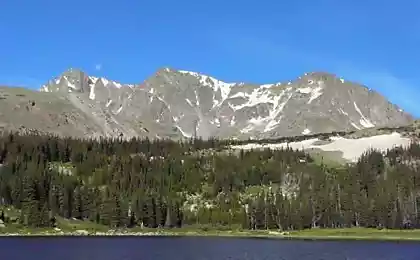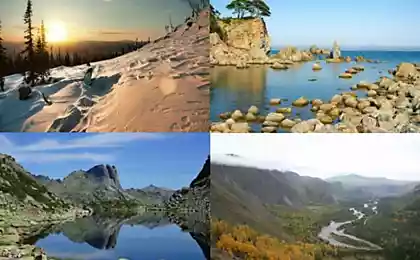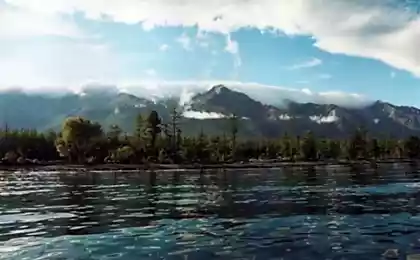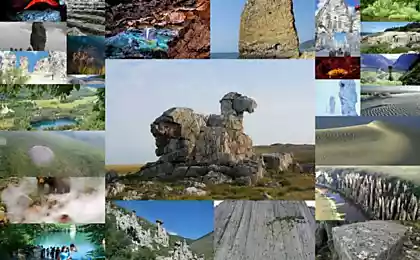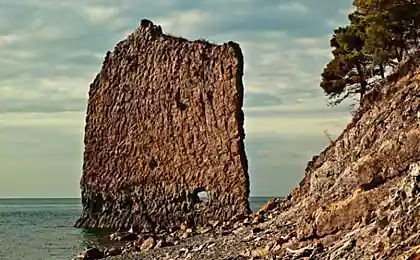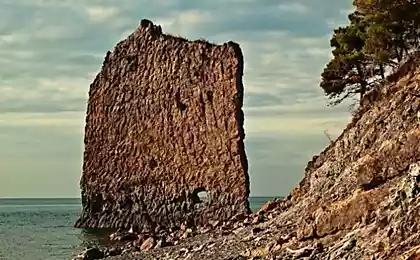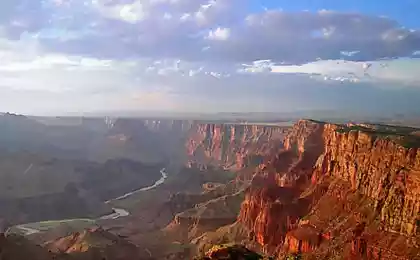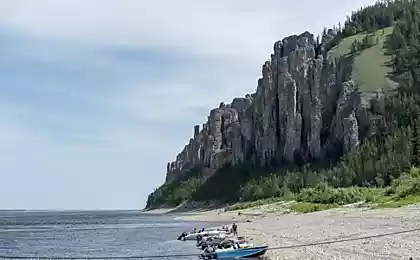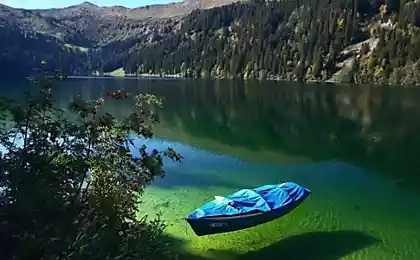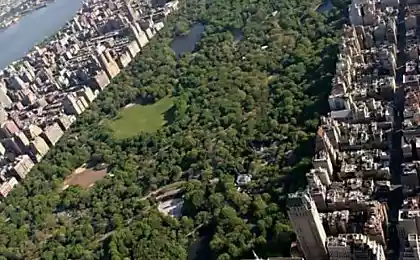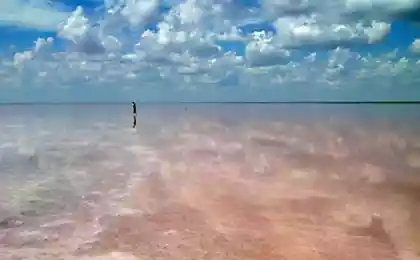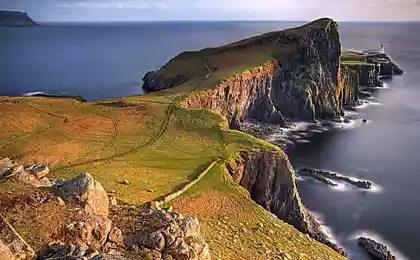506
National Park Lena pillars, Russia
Lena pillars — complex vertically elongated rocks, stretching for miles along the banks of the river Lena in Yakutia. These geological formations entered into the system of specially protected natural areas as national natural Park.
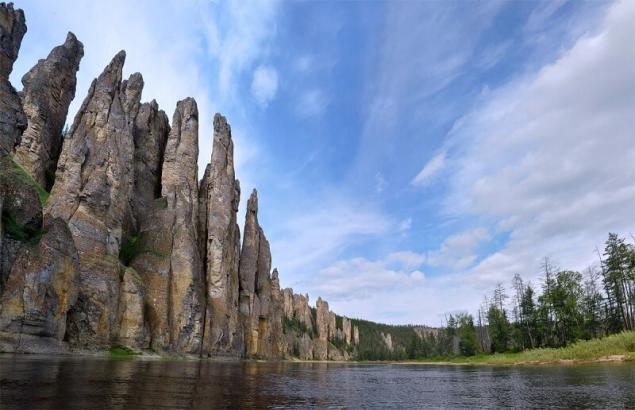
The reserve is located on the land territory of the Khangalassky and Olekminsky district (ulus) and consists of two isolated sections: the "Posts" (located on the right Bank of the Lena river and river basin of the river) and the section "Sinskaya" (located on the left Bank of the Lena river above the mouth of Blue river).
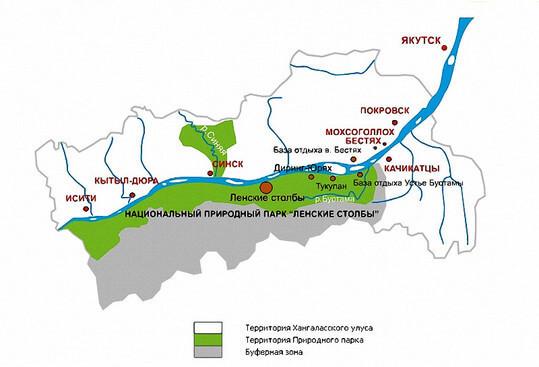
At all times this natural formation makes people awe. Long for Yakuts and Evenks this place was sacred. Ordinary people there the way was ordered. They feared the wrath of the spirits of the rocks. Many believed that the pillars are frozen statues of people, created by unknown otherworldly forces. Only those elders or shamans of the Almighty, decided to approach these mysterious rocks.
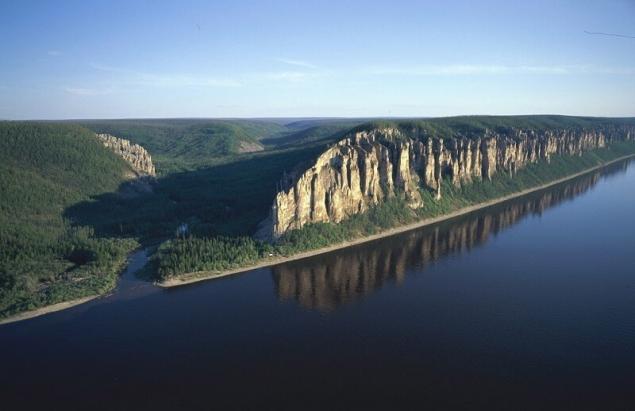

It is established that these rocks are of early Paleozoic sedimentary rocks, and limestone age not less than 530-570 million years. Once there was a shallow warm sea that once lapped the shores of the ancient Siberian continent. Millions of years on its bottom was deposited the dead remains of various small shell organisms, forming a heavy strata. Over time the sea became dry land. Hundreds of millions of years, only in the anthropogenic period, under the influence of tectonic processes of the continental Siberian platform slowly rose to 200 m, which resulted in deep incised valley of the river Lena. Have any faults and deep river valleys, intensified karst processes, which, along with the continued erosion vyvetrivaniya, has created such a whimsical and diverse forms of rocks composed of carbonate rocks. Thus arose the geological and landscape phenomenon called the Lena pillars. It should be noted that, unlike North-Western regions of Russia, in the era of the ice ages were very dry climate, prevented the formation of glaciers. Even when in the Northern hemisphere temperature maximum down here ice shell apparently had traces of its effects on the local landscapes available.
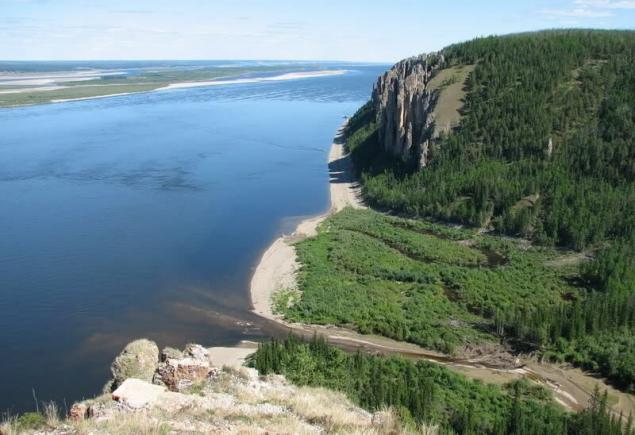
Russian paleontologists in local sediments found 350 early Cambrian genera of organisms from 2000, now known to science. The overall diversity of creatures in this region was higher for the early Cambrian of the world. These genera include the first archeocyathids (primitive sponges), radiatsii, corallimorph, brachiopods and some other groups of fossil animal with a mineral skeleton. In addition, there discovered of extinct organisms exclusively fully intact (such as the mammoth, woolly rhinoceros, etc.). They form fossil Sinskey ecosystem that includes a number of unique specimens with preserved soft tissues and cells, and even embryos. Rocks that make up the Lena pillars is a genuine treasure trove for science.
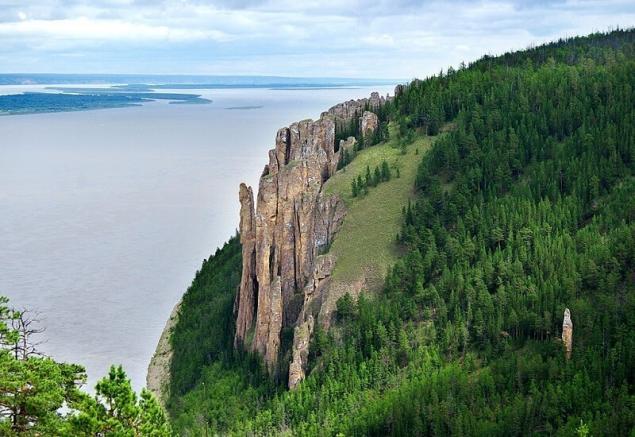
In addition to the stone pillars, the Park has such remarkable objects as the waving sand-dune complex with separate areas of the cold Northern sandy desert and the ancient encampment at the mouth of the Creek Deering-yuriakh, in the course of excavations which were found stone tools. Dune complex:
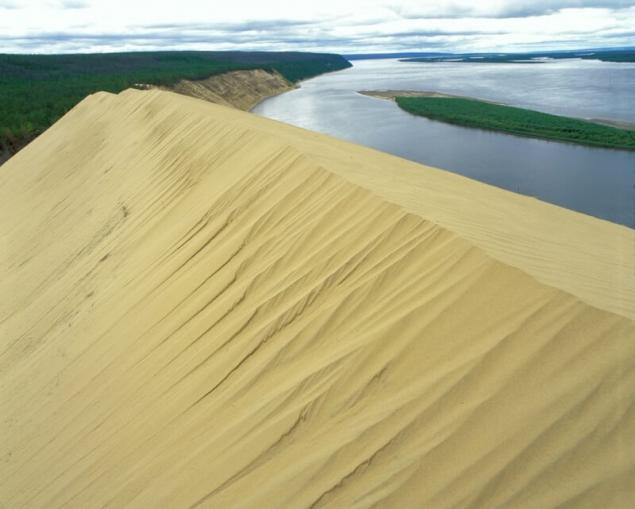
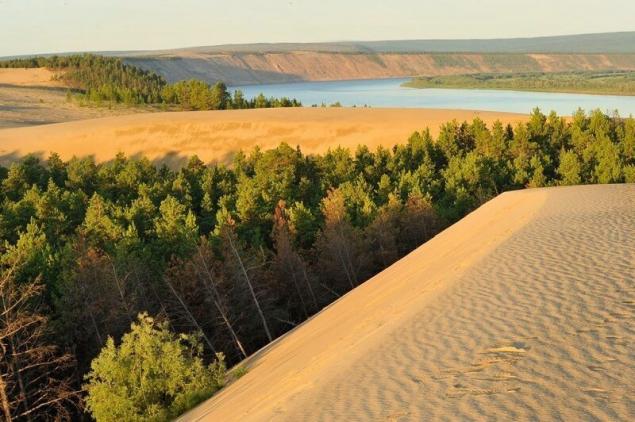
On the rocks on the riverbanks of the Lena and Blue found numerous petroglyphs – rock carvings made yellow mineral paint by the ancient inhabitants of these places. This is in varying degrees preserved stylized images of animals, fragments of inscriptions in the old Turkic runic script, the rock song with the image of a man.
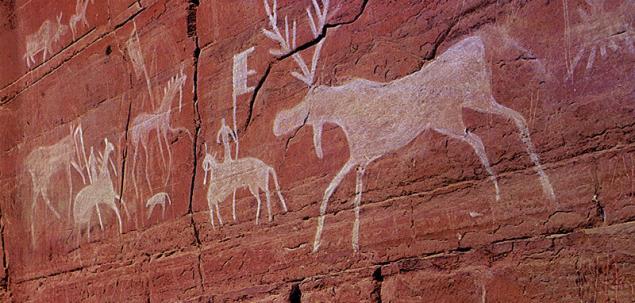
The number of travelers visiting these places has increased significantly by the end of the XIX century, but even in a dynamic twentieth century because of the remoteness and small population of these places visited are not so many people. In Yakutsk began to organize special cruises to the Lena pillars by boat. By the end of the century, the leadership of the Sakha Republic attended to the development of international tourism in the region. It was necessary to save not only the stone forest in its pristine glory, but also the surrounding areas. It is very important that local authorities are not waiting for guidance from the capital, and on their own initiative with the support of the General public in Yakutia in 1994 adopted a decision on the organization of the nature Park "Lena pillars". The office of the national Park:
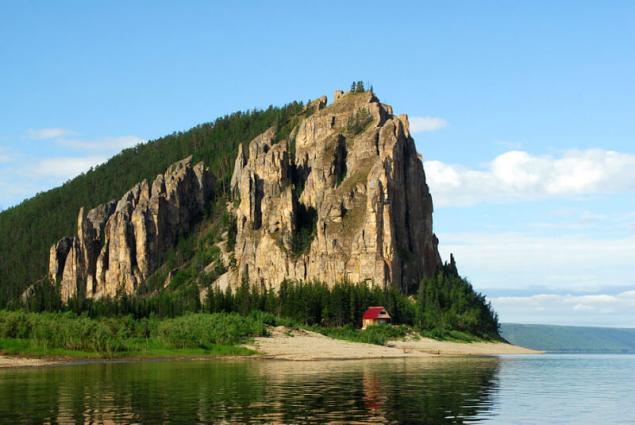
Since unique landscapes began to gain more prominence. The poles today is a popular place for tourists and residents of Yakutsk (Yakutsk to posts about 180 km). In summer, the river here can organize boat tours. Here not to do without a camera, camcorder or binoculars! If you swim upstream of the mighty river Lena, in the southwest of Yakutia before the eyes of travellers arise, the wonderful views of the bizarre rocky cliffs. This unique natural formation in the form of a very extensive series of outcrops that extend in a continuous chain for tens of kilometers along the slopes of the right Bank. Sometimes they look like huge, monolithic wall, which occasionally interrupt the gorges of the tributaries of the Lena river. But want to get close to the posts as the wall begins to divide on self -, not like other sculptures, resembling the fairy-tale medieval castles, Gothic churches, bell towers of Orthodox churches. Among the rocks one can see the other creations witches nature: figures of unknown animals and fairy tale characters. If you long to sail along the ridge of rocks, at times fancied that they come alive and that's on the move. Especially strong this visual effect before sunset.
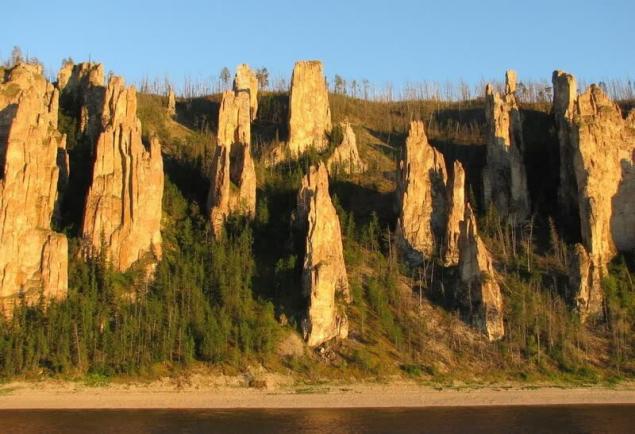
Lena pillars were included in the world Heritage list of UNESCO in 2006 as one of the most amazing places on our planet with a perfect ecosystem, untouched by man.
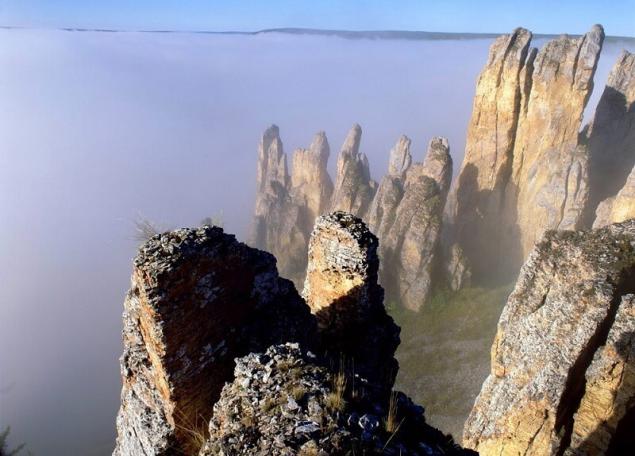
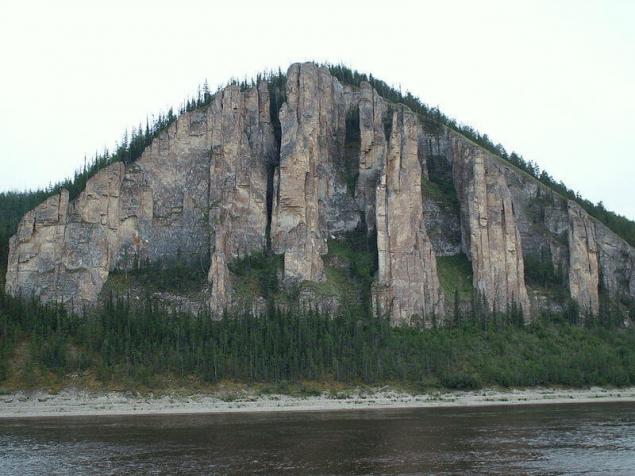
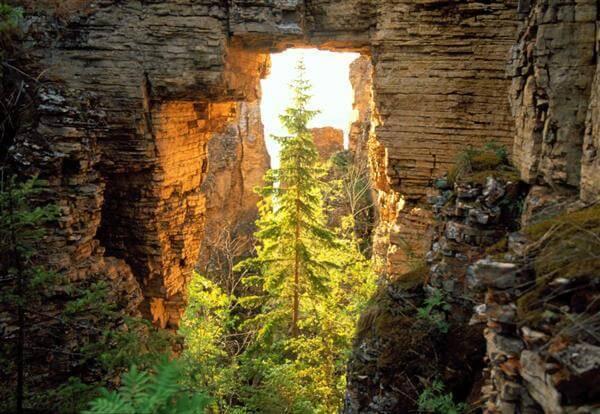
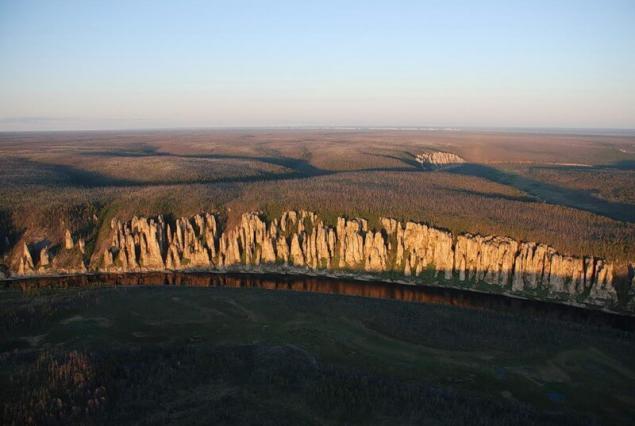
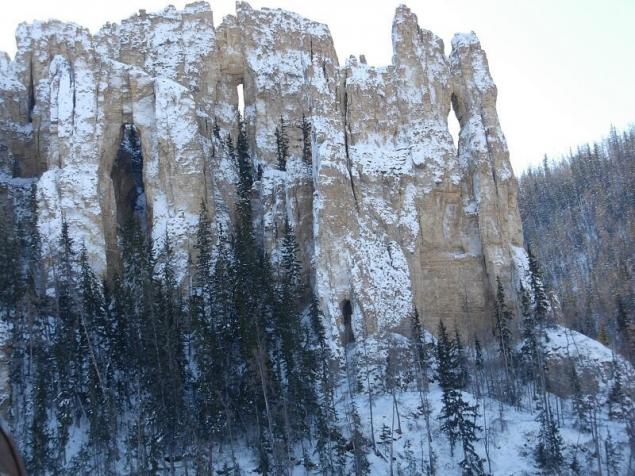
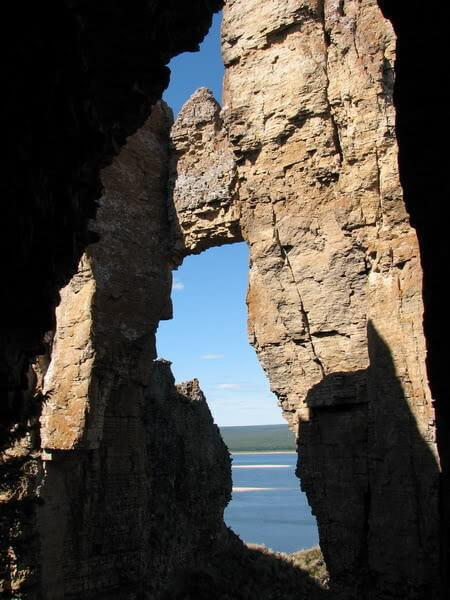
Blue River:
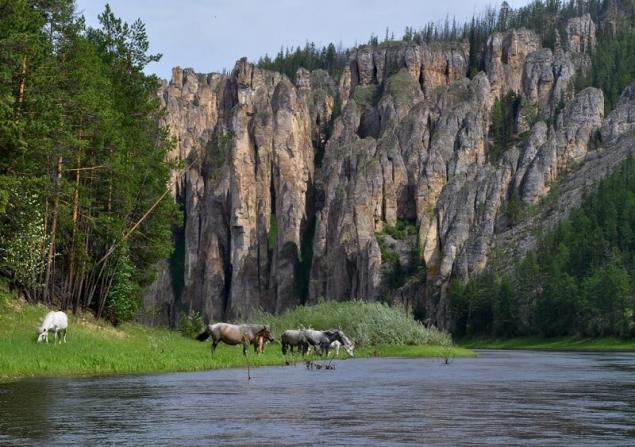
The pillars in the river Blue:
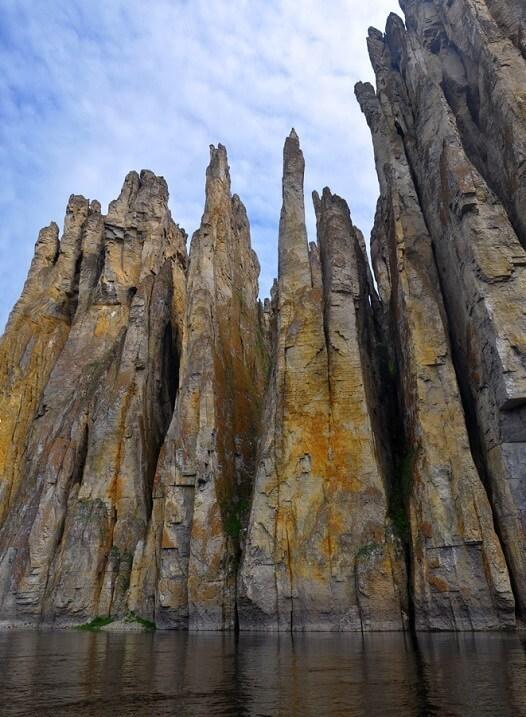
Freakish rocks on the Blue river:
P. S. And remember, only by changing their consumption — together we change the world! © Join us at Facebook , Vkontakte, Odnoklassniki
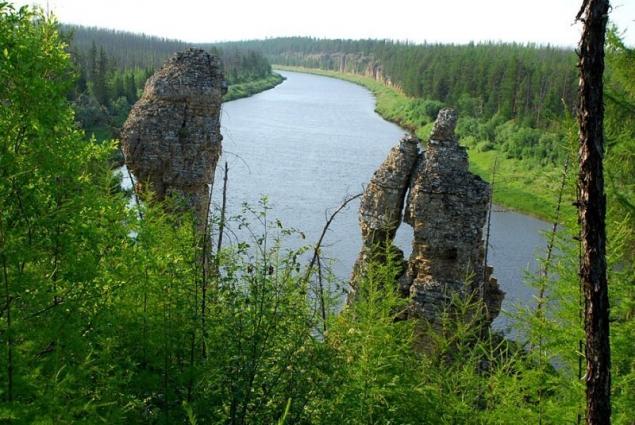
Source: udivitelno.com/mesta/item/508-lenskie-stolby-rossija

The reserve is located on the land territory of the Khangalassky and Olekminsky district (ulus) and consists of two isolated sections: the "Posts" (located on the right Bank of the Lena river and river basin of the river) and the section "Sinskaya" (located on the left Bank of the Lena river above the mouth of Blue river).

At all times this natural formation makes people awe. Long for Yakuts and Evenks this place was sacred. Ordinary people there the way was ordered. They feared the wrath of the spirits of the rocks. Many believed that the pillars are frozen statues of people, created by unknown otherworldly forces. Only those elders or shamans of the Almighty, decided to approach these mysterious rocks.


It is established that these rocks are of early Paleozoic sedimentary rocks, and limestone age not less than 530-570 million years. Once there was a shallow warm sea that once lapped the shores of the ancient Siberian continent. Millions of years on its bottom was deposited the dead remains of various small shell organisms, forming a heavy strata. Over time the sea became dry land. Hundreds of millions of years, only in the anthropogenic period, under the influence of tectonic processes of the continental Siberian platform slowly rose to 200 m, which resulted in deep incised valley of the river Lena. Have any faults and deep river valleys, intensified karst processes, which, along with the continued erosion vyvetrivaniya, has created such a whimsical and diverse forms of rocks composed of carbonate rocks. Thus arose the geological and landscape phenomenon called the Lena pillars. It should be noted that, unlike North-Western regions of Russia, in the era of the ice ages were very dry climate, prevented the formation of glaciers. Even when in the Northern hemisphere temperature maximum down here ice shell apparently had traces of its effects on the local landscapes available.

Russian paleontologists in local sediments found 350 early Cambrian genera of organisms from 2000, now known to science. The overall diversity of creatures in this region was higher for the early Cambrian of the world. These genera include the first archeocyathids (primitive sponges), radiatsii, corallimorph, brachiopods and some other groups of fossil animal with a mineral skeleton. In addition, there discovered of extinct organisms exclusively fully intact (such as the mammoth, woolly rhinoceros, etc.). They form fossil Sinskey ecosystem that includes a number of unique specimens with preserved soft tissues and cells, and even embryos. Rocks that make up the Lena pillars is a genuine treasure trove for science.

In addition to the stone pillars, the Park has such remarkable objects as the waving sand-dune complex with separate areas of the cold Northern sandy desert and the ancient encampment at the mouth of the Creek Deering-yuriakh, in the course of excavations which were found stone tools. Dune complex:


On the rocks on the riverbanks of the Lena and Blue found numerous petroglyphs – rock carvings made yellow mineral paint by the ancient inhabitants of these places. This is in varying degrees preserved stylized images of animals, fragments of inscriptions in the old Turkic runic script, the rock song with the image of a man.

The number of travelers visiting these places has increased significantly by the end of the XIX century, but even in a dynamic twentieth century because of the remoteness and small population of these places visited are not so many people. In Yakutsk began to organize special cruises to the Lena pillars by boat. By the end of the century, the leadership of the Sakha Republic attended to the development of international tourism in the region. It was necessary to save not only the stone forest in its pristine glory, but also the surrounding areas. It is very important that local authorities are not waiting for guidance from the capital, and on their own initiative with the support of the General public in Yakutia in 1994 adopted a decision on the organization of the nature Park "Lena pillars". The office of the national Park:

Since unique landscapes began to gain more prominence. The poles today is a popular place for tourists and residents of Yakutsk (Yakutsk to posts about 180 km). In summer, the river here can organize boat tours. Here not to do without a camera, camcorder or binoculars! If you swim upstream of the mighty river Lena, in the southwest of Yakutia before the eyes of travellers arise, the wonderful views of the bizarre rocky cliffs. This unique natural formation in the form of a very extensive series of outcrops that extend in a continuous chain for tens of kilometers along the slopes of the right Bank. Sometimes they look like huge, monolithic wall, which occasionally interrupt the gorges of the tributaries of the Lena river. But want to get close to the posts as the wall begins to divide on self -, not like other sculptures, resembling the fairy-tale medieval castles, Gothic churches, bell towers of Orthodox churches. Among the rocks one can see the other creations witches nature: figures of unknown animals and fairy tale characters. If you long to sail along the ridge of rocks, at times fancied that they come alive and that's on the move. Especially strong this visual effect before sunset.

Lena pillars were included in the world Heritage list of UNESCO in 2006 as one of the most amazing places on our planet with a perfect ecosystem, untouched by man.






Blue River:

The pillars in the river Blue:

Freakish rocks on the Blue river:
P. S. And remember, only by changing their consumption — together we change the world! © Join us at Facebook , Vkontakte, Odnoklassniki

Source: udivitelno.com/mesta/item/508-lenskie-stolby-rossija

